In 1896, Italian inventor Guglielmo Marconi achieved the first wireless communication in human history. From then on, humanity opened the door to the world of radio.
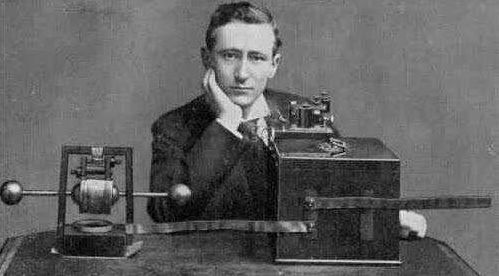
Guglielmo Marconi (1874-1937)
The radio telegraph at that time used a spark-gap transmitter, and the transmitted signal content was Morse code.
This radio telegraph could not receive and send signals simultaneously. Therefore, the speed of sending and receiving telegrams was slow and inefficient.
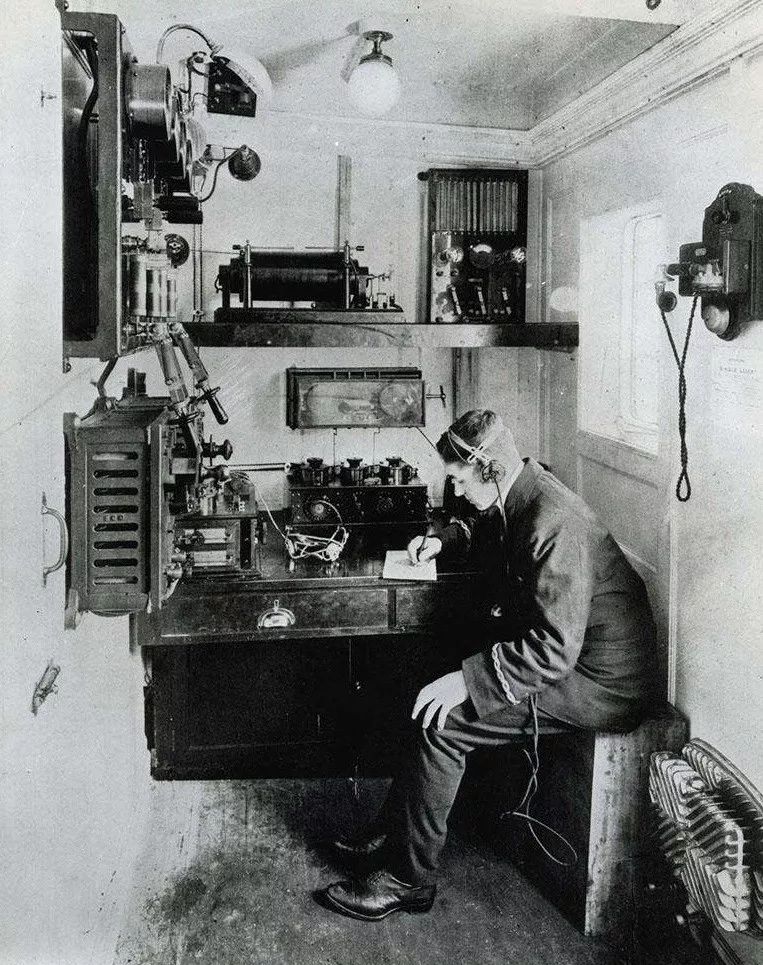
The telegraph operator is “listening” to the telegram.
Alongside the development of radio telegraphy, radio broadcasting services also emerged. This was another important application of wireless technology.
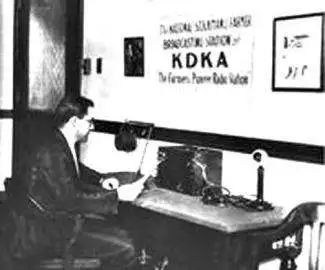
The world’s first broadcasting station
As the number of broadcasts and stations on Earth increased, wireless interference became more and more serious.
In this situation, the government began to intervene, regulating radio broadcasts and managing the use of radio frequencies uniformly.
This is the origin of the spectrum licensing system.
In the 1970s, cellular mobile communication began to rise and was also subject to the spectrum licensing system.
At that time, in the United States, the FCC (Federal Communications Commission) was responsible for managing and licensing the spectrum.
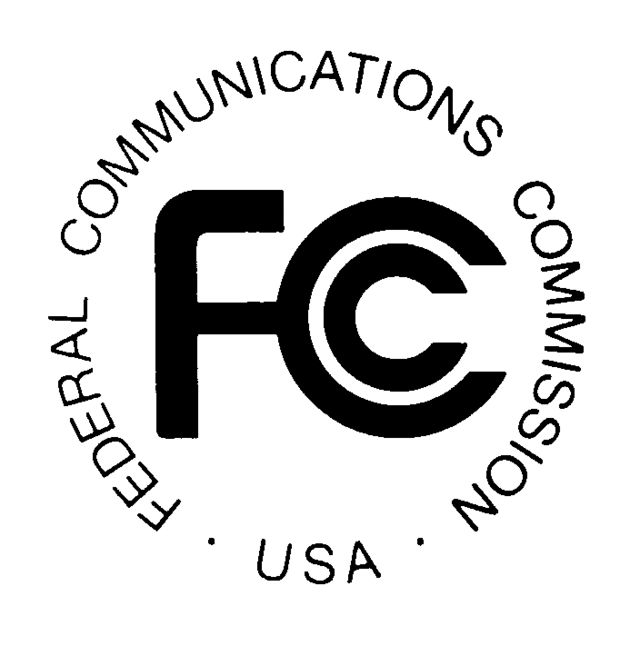
The FCC logo
Entering the 1980s, with the rapid development of microcircuits and digital signal processing technologies, wireless technology made great strides, with new wireless devices constantly being invented and new mobile communication standards emerging. However, constrained by the spectrum licensing system, the research and development of these new devices and technologies were severely restricted.
At this time, a key figure emerged—Michael Marcus (later known as the “Father of Wi-Fi”).

At that time, Marcus was just an ordinary engineer at the FCC.
One day, he made a suggestion to his superiors: to define some unlicensed spectrum for industry use and to appropriately increase the transmission power of these unlicensed spectrum devices to cover a range of tens to hundreds of meters. Doing so would encourage technology companies to innovate more and bring greater economic benefits.
The FCC adopted his suggestion and solicited opinions from various sectors of society. However, the feedback received was completely irresponsible:
As long as it doesn’t occupy my frequency band, you can play however you want!
Indeed, at that time, frequency band resources were already severely occupied, and no one wanted to release the frequency bands they held.
In the end, the FCC could only release three unwanted “garbage bands” from the limited available bands.These bands are what we now commonly refer to as the ISM bands.

These bands are primarily open for use in industry, science, and medicine, belonging to Free License, hence also called “unlicensed spectrum”.
Regarding device transmission power, the FCC stipulated that the transmission power of devices in these new unlicensed bands could reach 1W.
No one expected that this 1W would lead to the development of today’s Wi-Fi, Bluetooth, ZigBee, and other short-range communication technologies.
At that time, to avoid interference between devices, the FCC required products in these new unlicensed bands to use spread spectrum technology.
Spread spectrum technology refers to a method where the bandwidth used for transmitting information is much larger than the bandwidth of the information itself. At the transmitting end, spread spectrum coding is used for modulation, and at the receiving end, correlational demodulation techniques are used to receive the information. Spread spectrum technology was initially applied in military fields, possessing characteristics of high reliability, high confidentiality, and resistance to interference.
After the FCC’s new regulations were introduced, they received widespread welcome from the industry. However, just when everyone was focused on development, a new problem arose—
There was no unified standard within the entire industry.
At that time, many wireless product manufacturers were developing their own specialized devices, with no collaboration, and devices from different manufacturers could not be compatible at all.
In 1988, American NCR Corporation wanted to use unlicensed bands to create a wireless cash register (NCR was one of the earliest companies to make mechanical and electric cash registers, later acquired by AT&T). So, they brought in their R&D engineer Victor Hayes and asked him what to do.
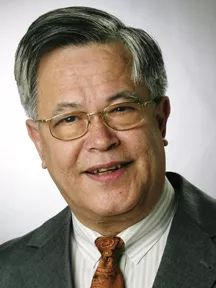
Victor Hayes
Victor Hayes was very forward-thinking; he believed that a unified standard must first be established. He then collaborated with another engineer from Bell Labs, Bruce Tuch, to approach the IEEE, hoping to establish a set of universal unlicensed spectrum standards.

IEEE, Institute of Electrical and Electronics Engineers
Thus, in the early 1990s, IEEE established the famous 802.11 Working Group, chaired by Victor Hayes.
At the same time, in 1991, NCR’s engineering team and its joint partner AT&T developed the WaveLAN technology in Neuwegein, Netherlands. This technology is considered the prototype of Wi-Fi.
So, is NCR the inventor of Wi-Fi? Not exactly.
While NCR was working on WaveLAN, the Australian government research agency CSIRO also invented a wireless network technology. The specific inventor was John O’Sullivan from the University of Sydney and his team.

Dr. John O’Sullivan
In 1996, they successfully applied for a technology patent in the United States, patent number US Patent Number 5,487,069. (Later, they even had a lawsuit over this patent.)
In 1999, when the IEEE officially defined the 802.11 standard, it chose and recognized the wireless network technology invented by CSIRO as the best wireless network technology in the world, thus incorporating it as the core technology standard for Wi-Fi.
Finally, the standard versions of IEEE802.11: 802.11b (operating in the 2.4GHz band) and 802.11a (operating in the 5.8GHz band) were approved in December 1999 and January 2000, respectively.
While the working group was busy establishing standards, six companies—Intersil, 3Com, Nokia, Aironet, Symbol, and Lucent—formed the Wireless Ethernet Compatibility Alliance (WECA).
The purpose of WECA’s establishment was mainly to certify the compatibility of products from different manufacturers and achieve interoperability between devices from different manufacturers.
After the alliance was formed, to facilitate market promotion, they discussed changing to a catchy name, such as “WECA Compatible” or “IEEE802.11b Compatible,” etc. However, such obscure terminology was hard for people to say. For this reason, WECA even consulted branding experts, who provided many suggestions, such as “FlankSpeed,” “DragonFly,” and so on.
In the end, the name “Wi-Fi” emerged victorious.
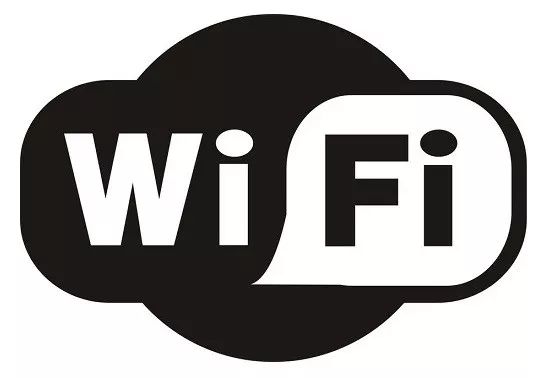
The reason it was called “Wi-Fi” is that it sounds a bit like “HiFi,” which easily evokes the idea that CD players from different manufacturers can be compatible with any amplifier. Later, some people claimed that “Wi-Fi” is short for “wireless fidelity,” but this was actually just a later assumption.
In October 2002, WECA officially changed its name to Wi-Fi Alliance.
Now that the technology was standardized and had a name, what should be done next?
Find partners.
No matter how good your technology is, you need people willing to use it and device manufacturers to support it.
Apple was quite proud; they told Lucent that if the price of their wireless adapter could drop below $100, they would design a Wi-Fi slot into their laptops.
Lucent agreed.
In July 1999, Apple introduced Wi-Fi for the first time in its new iBook laptop, but it was not standard equipment, just an option.

Steve Jobs demonstrated the “wireless” magic of the iBook G3, naming it “AirPort.”
However, this “optional feature” quickly attracted the attention of other computer manufacturers.
Not only did hardware manufacturers follow suit with Wi-Fi, but Microsoft’s Windows XP operating system also added support for Wi-Fi (users could achieve wireless connections without installing third-party drivers or software).
Since then, the use of Wi-Fi has expanded continuously, from individuals to families, and from families to public places, entering the lives of each of us.

At this point, the IEEE802.11 Working Group readjusted the IEEE802.11 protocol standards and launched a new physical layer standard, IEEE802.11g. It uses more advanced spread spectrum technology called Orthogonal Frequency Division Multiplexing (OFDM), achieving rates of up to 54Mbps in the 2.4GHz band.
Later, there were also 802.11n, 802.11ac, 802.11ad, and so on.
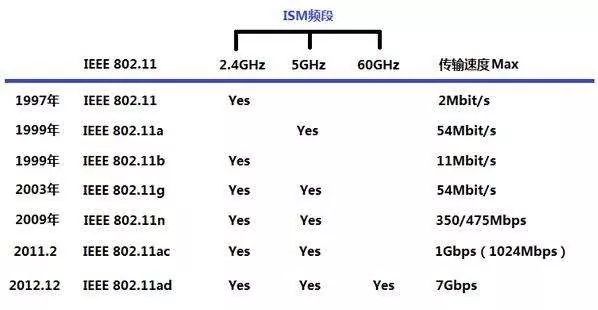
The development trajectory of 802.11
Because naming conventions like 802.11a/b/n/g/ac/ax are indeed easy to confuse and hard to see the chronological order, IEEE decided to start naming them numerically from 802.11ax.
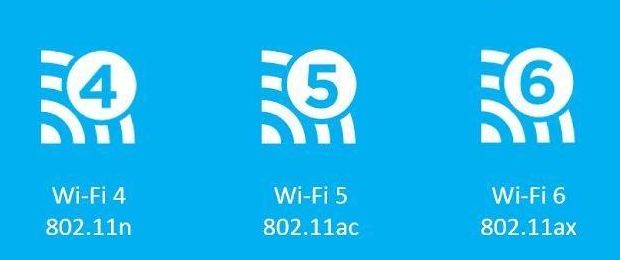
And 802.11ax is what we now know as Wi-Fi 6.

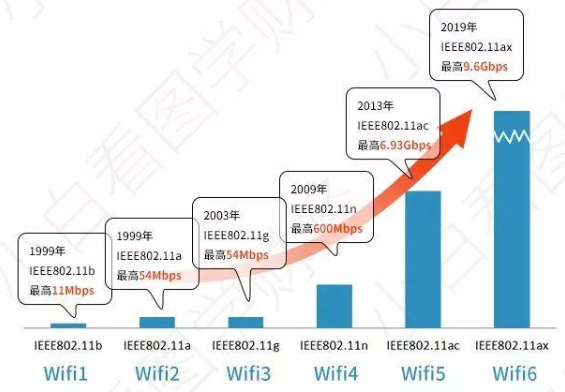
After more than 20 years of development, the transmission speed of Wi-Fi 6 is already 873 times that of the first generation of Wi-Fi.
It must be said that Wi-Fi is a very successful wireless communication technology, which has greatly changed our lives.
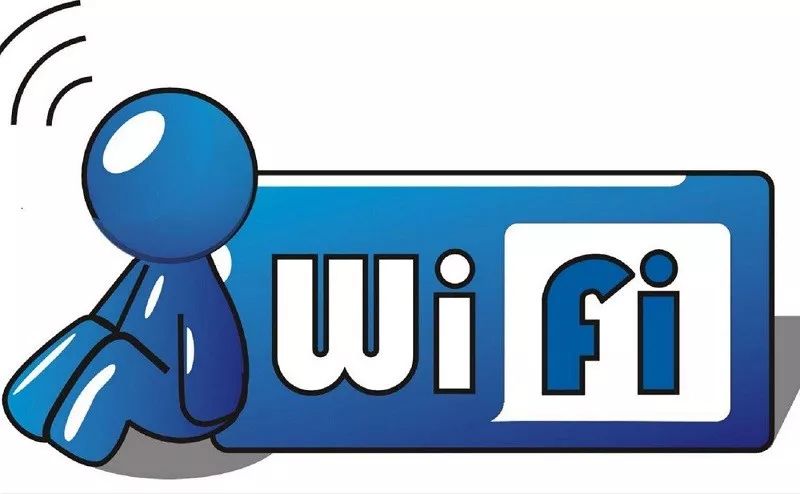
Today, Wi-Fi has reached a historical crossroads. Faced with the challenge of 5G, where will it go next? Let time tell us the answer.
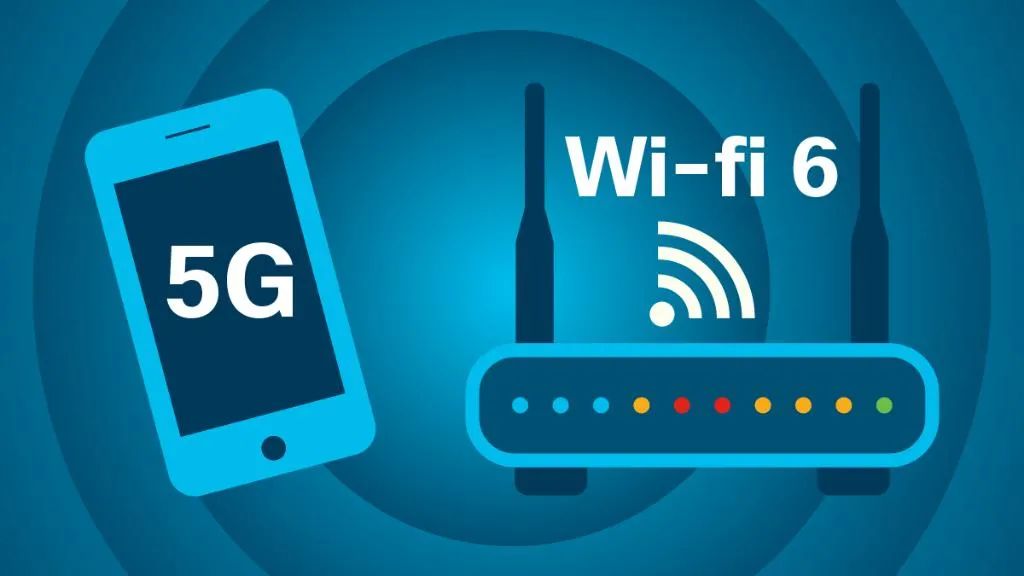
(End of text)
